Written & Photographed by Koa Kalish
On a steep and sunny, five-acre hillside in El Dorado County, Catherine Lawson tends to her flock. They are some of the most luxurious wool-producing ungulates around, Merino sheep and Cashmere goats, and here, they live in many colors.
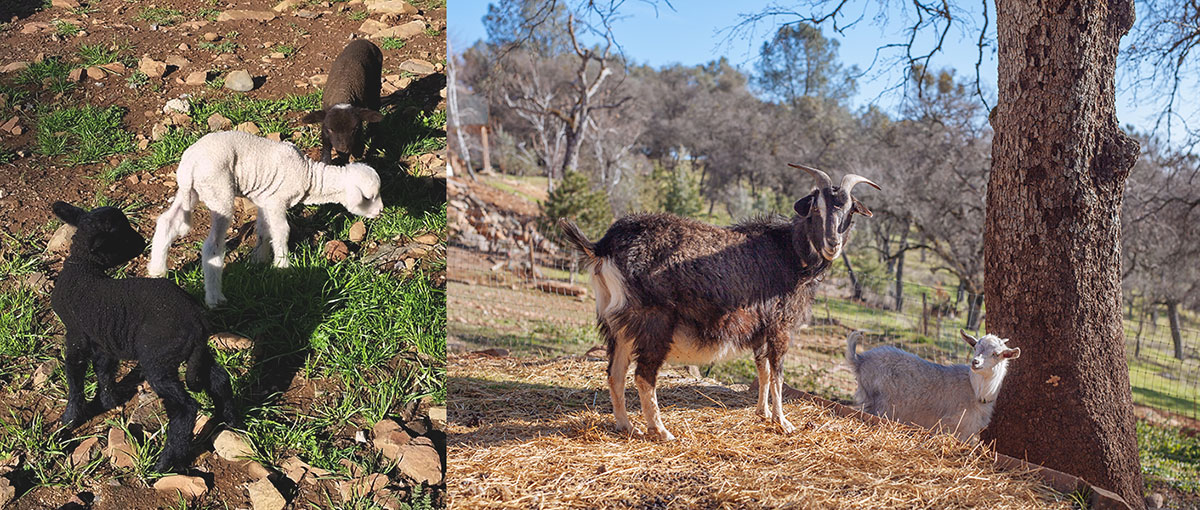
Photo of lambs on left by Catherine Lawson.
The Merino grow fleeces of white, tan, and black (which really looks like chocolate-silver, Catherine explains). They wear coats throughout the year to protect their fleece’s quality and cleanliness. Once shorn, the sheep are given the smallest size coat, which is then changed 3-4 times a year as the wool grows back and slightly larger coats are needed. The cashmere goats, however, have no need for coats. The “guard hairs” (the coarser, thicker hairs that aren’t suitable for spinning) protect the fine undercoat. “It’s like your dog shedding. You comb their hair and then pick out the guard hairs by hand. Once you’ve done that, you have the softer fibers that you can comb to make into roving.” After learning just how labor-intensive it is to get the usable material, plus the preparation and comparatively low yield of fiber from the goats, it’s no wonder cashmere is as expensive as it is.
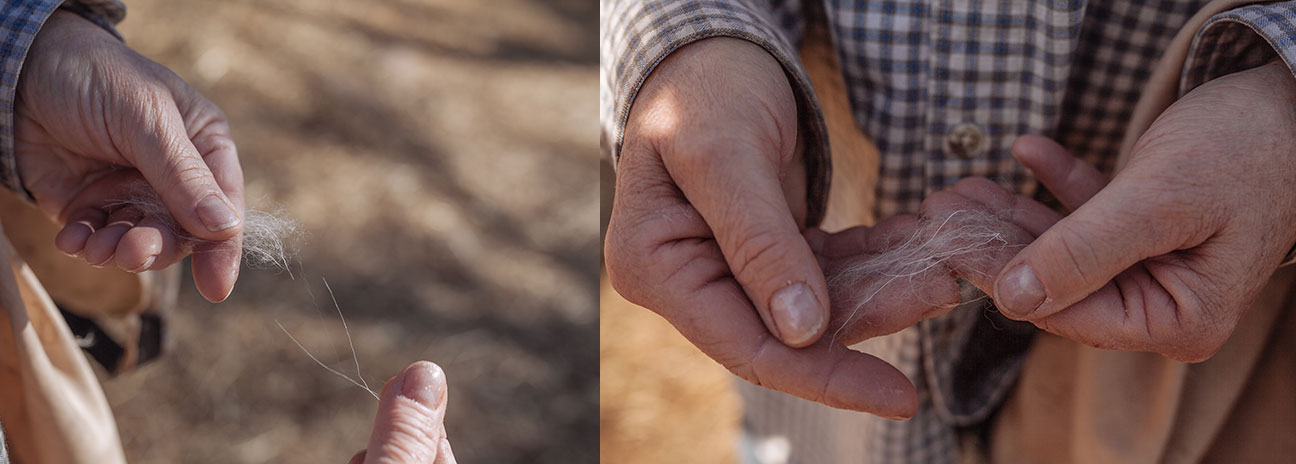
“A black goat will never give you black cashmere” states Catherine. “Everything you buy in the store that is black cashmere has been dyed. A producer I know in the Midwest said she has a baby goat that looks like it might give off true black cashmere, and if so, that’s game-changing.” Black cashmere goats will actually produce a taupe or tan wool (but their body is black); and the whites will produce white. Catherine points out a beautiful pregnant goat standing under the oak tree with brown and white coloring, “This girl with the badger face, she has an ivory color fiber.”
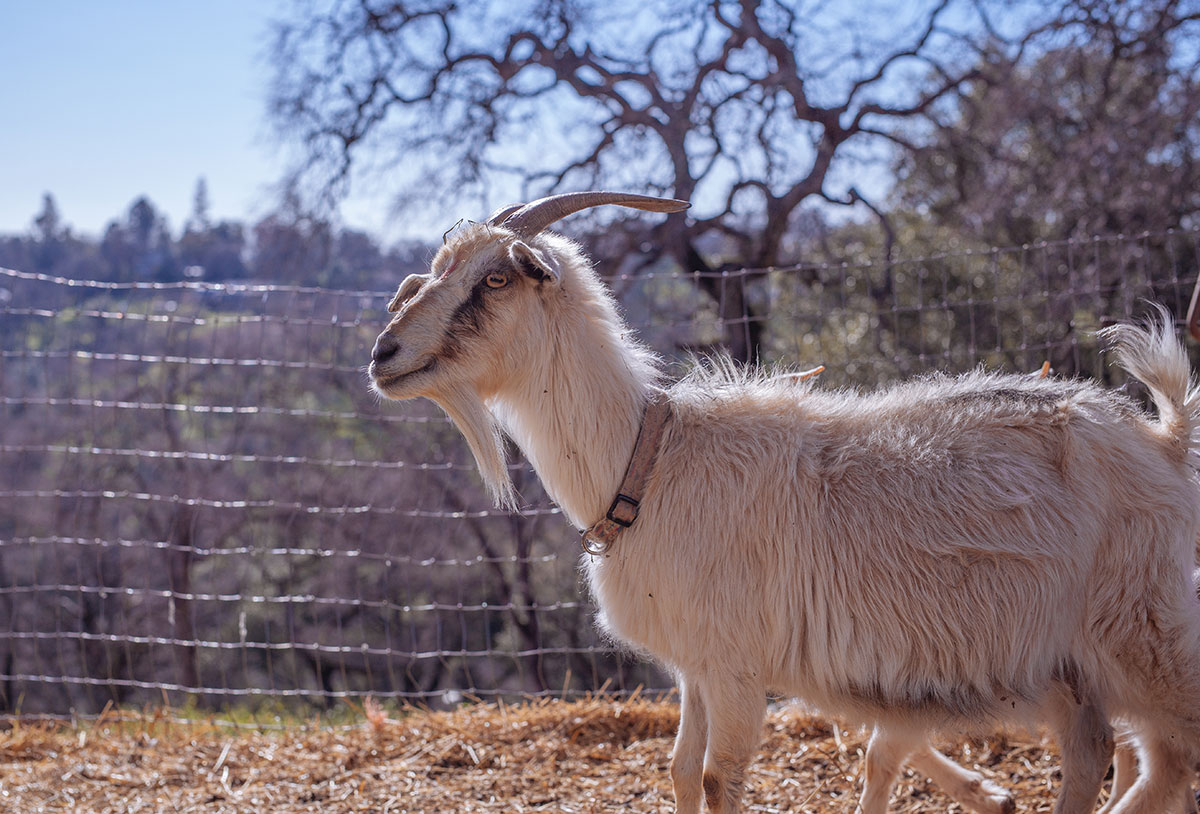
After walking the sloped pasture, Catherine ducks inside the blue barn, the very one her farm is named after. She emerges with a precious two-day-old doeling. The most remarkable thing, besides the undeniable cuteness of a tiny baby goat, is her color. “I was so shocked I almost fell over when I saw her color,” exclaims Catherine, “because this apricot is absolutely like nothing I have here. I have white and black. I do not have any red animals.” Her best guess was that her white buck Kristoff, who so far has thrown 100% white kids (even with the black does), may be the carrier of the recessive apricot gene. When paired with a certain doe, somehow this never-before-seen recessive color emerged. With an apricot orange coat and baby blue eyes, she’s a pure wonder. “I think we’ll call her Nutmeg,” says Catherine gleefully. “I’m dying to find out what color cashmere she will actually make!”
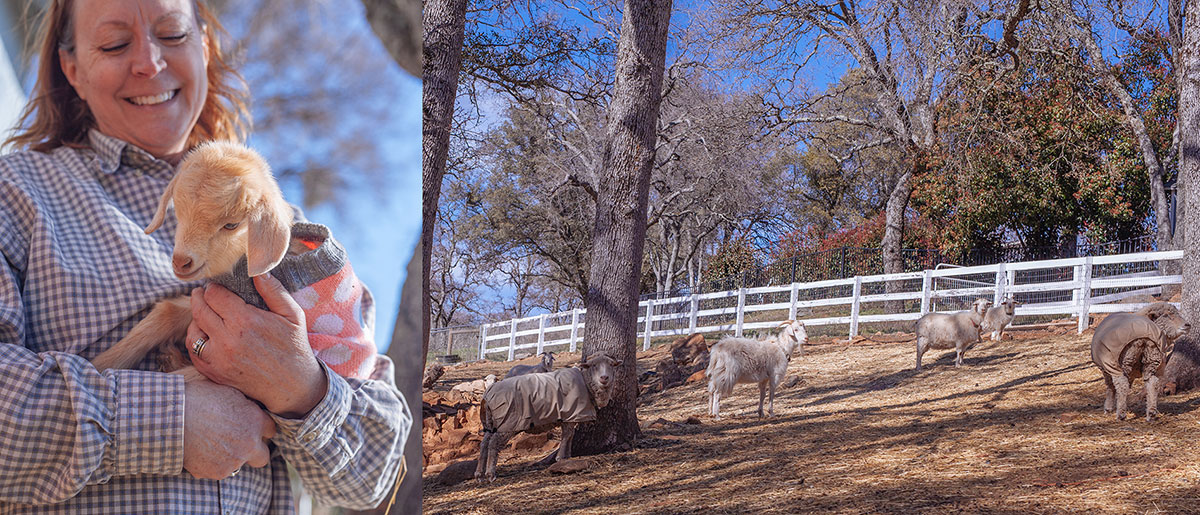
The next subject becomes grass, food, and soil. The land the animals have been on is well grazed; Catherine supplements with hay while a lush field of grass sits just beyond the cross-fence line. Catherine is waiting for help to have a part of the fence at the bottom of the hill repaired so that she can enable her cross-fencing system and rotate grazing. In looking at how tall the grass has grown, she determines the timing of when to move the animals. “The way that grass grows,” states Catherine, “it gets taller very slowly at first, and then, as there’s more blade to absorb sunlight and create chlorophyll, the second part of growth is much more rapid. Once the grass gets a certain height, maybe halfway, it will then get taller much faster until going to seed.” She reseeds the grass every year, and supplements with hay as needed. Catherine is also studying her soil quality.
“Here in the foothills of the Sierra Nevada, the earth is all rock with a little clay in between. We don’t really have soil. You’ve got to take the rock and clay and improve it somehow.” She’s currently engaged with taking soil samples with the assistance of Fibershed’s Citizen Science program, and learning how she can best improve it for her animals, her future gardens, and to assist with the erosion issues that come from grazing on a steep slope.
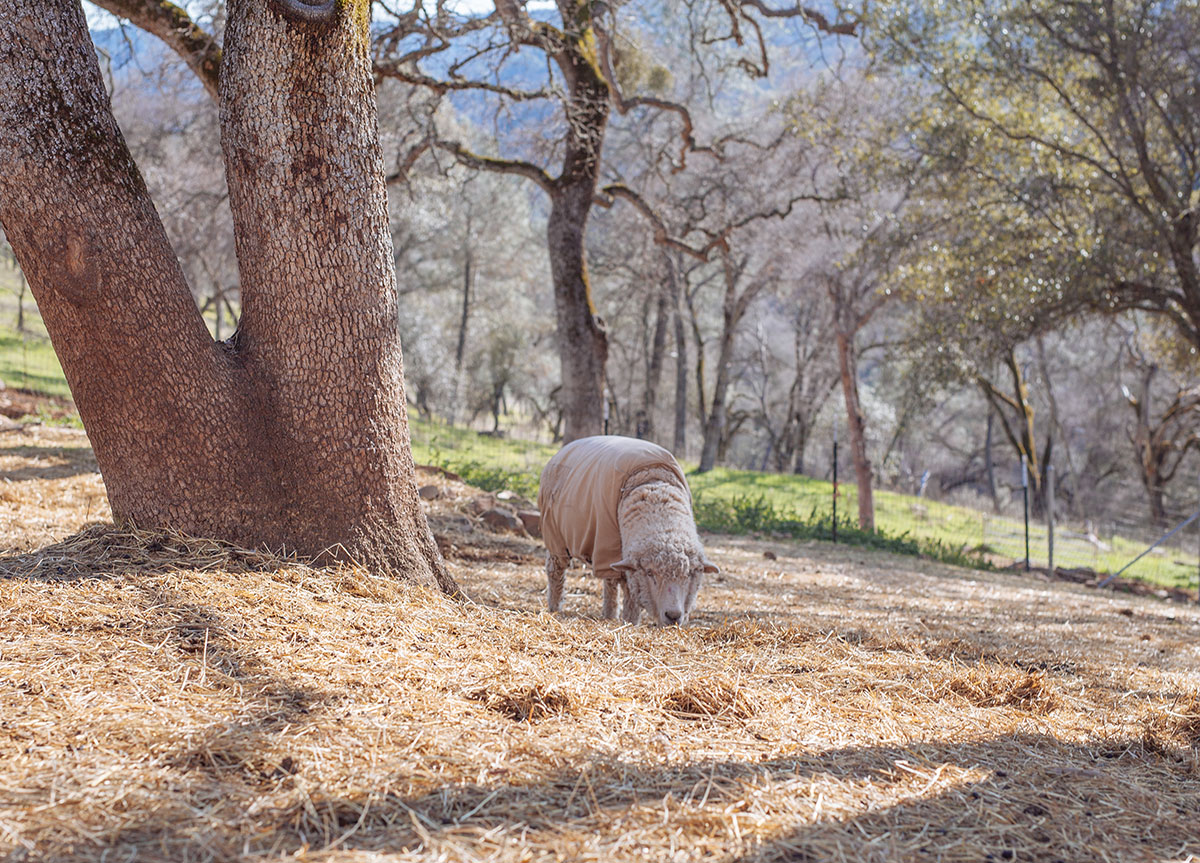
When asked what inspires her to do this work, Catherine relates, “Oh, this isn’t work. This is what I do for fun.” As for her work, Catherine is a full-time practicing attorney. Growing up in the tract houses of Yorba Linda, California, raising sheep was always on her mind, but an idea far off in the distance, perhaps for when she would retire. She has a lot to think about though, for when people retire the most important thing that they need to consider is how they are going to finance their retirement. Sometimes it a good idea to get a comprehensive explanation of how equity release works, as this is something that people have been looking in to. Moving on though, in 2011, however, she was diagnosed with breast cancer at the very same time she and her husband had decided to sell their home. All of their children had graduated from school, and it was clear a big transition was taking place. “The timing of it all made me think, you know what? What am I waiting for? I’m going to get out of these little houses and go get some property and buy some sheep. I just said I’m doing this.” After searching long and hard Catherine found the five-acre hillside property with the farmhouse and blue barn. She started Blue Barn Farm with her first seven ewes purchased from Gabrielle Mann in Bolinas. As it turned out, five of the ewes were already pregnant, giving birth that spring and leaving Catherine with a lot more sheep than first expected. Now her flock totals about 25 Merino sheep and 25 Cashmere goats, from whom Catherine collects and sells raw fiber, roving, and batts in a variety of colors.
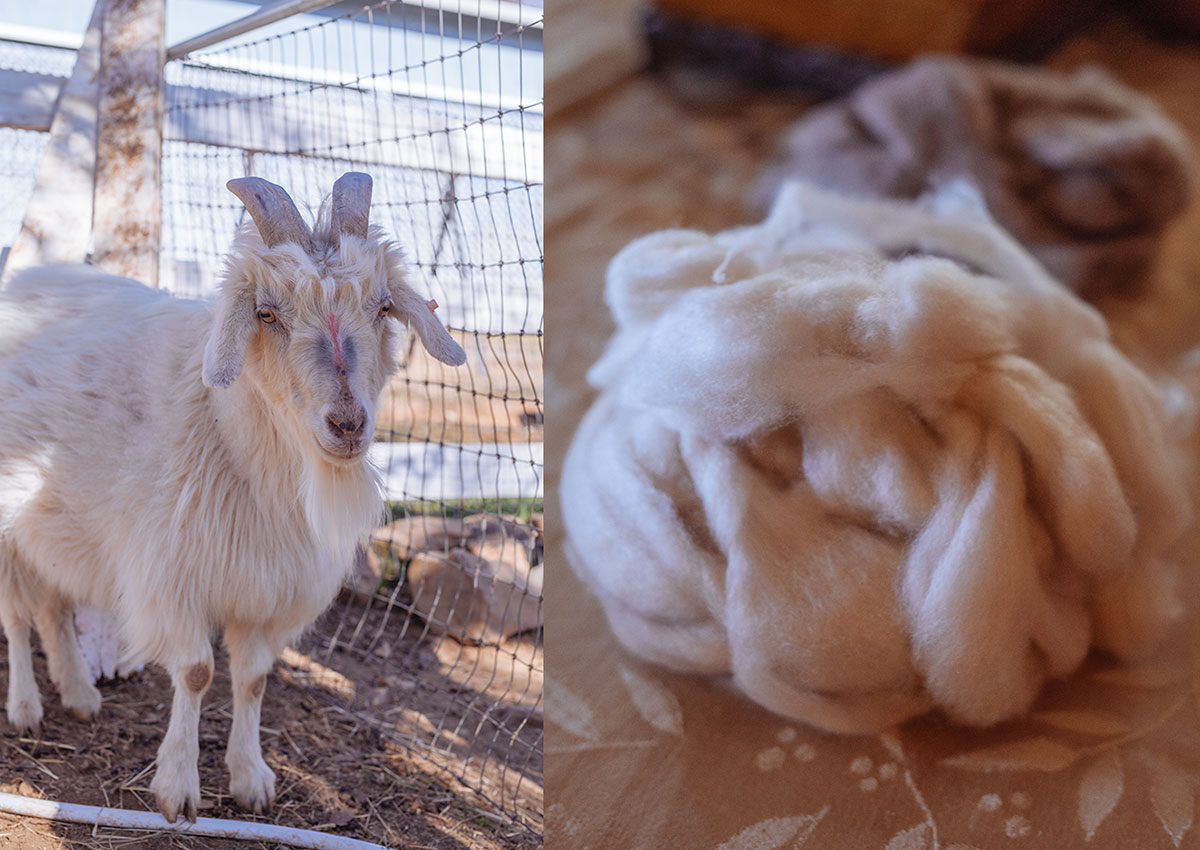
As the sun sets, the ewes, lambs, does and kids mingle nonchalantly together as they roam along the hillside, while the rams, bucks, and wethers keep cool in their area on the other side of the barn. “Sheep grow much faster than goats,” Catherine points out. “A goat will not grow to adult size until he’s three years old, but a sheep will grow to that size in half that time.” Though they are different sizes, ages, and colors, it looks like everyone is growing quite comfortably together as the newest addition to the family, little two-day-old Nutmeg, sleeps soundly in the barn. And the green grass grows a sliver taller on the foothills of the Sierra Nevada.
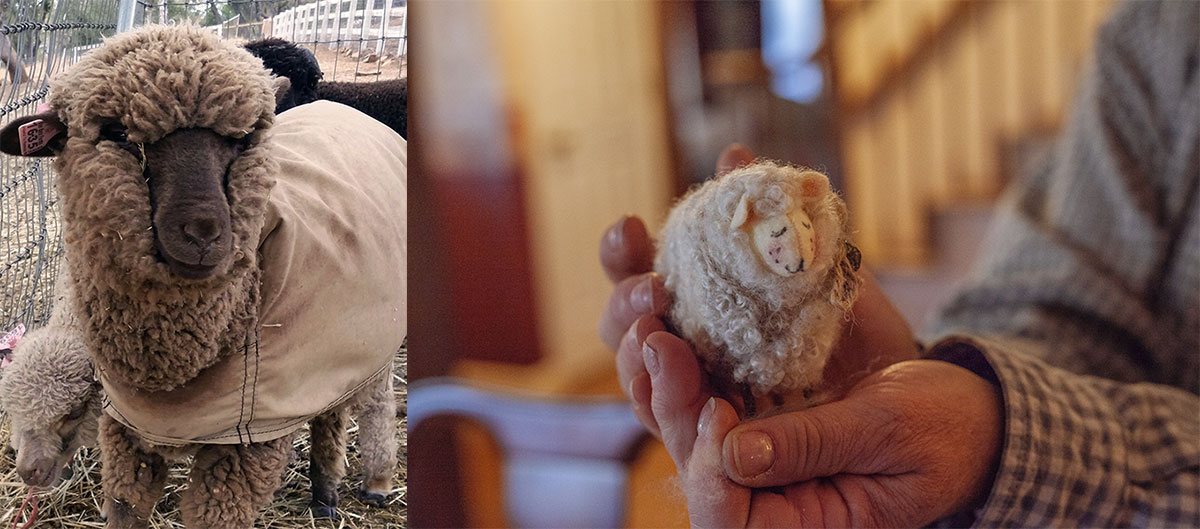
Photo of sheep on left by Catherine Lawson.
To be in touch with Catherine about roving and fiber sales, please email her. She sells at a number of fairs and shows in California throughout the year.
